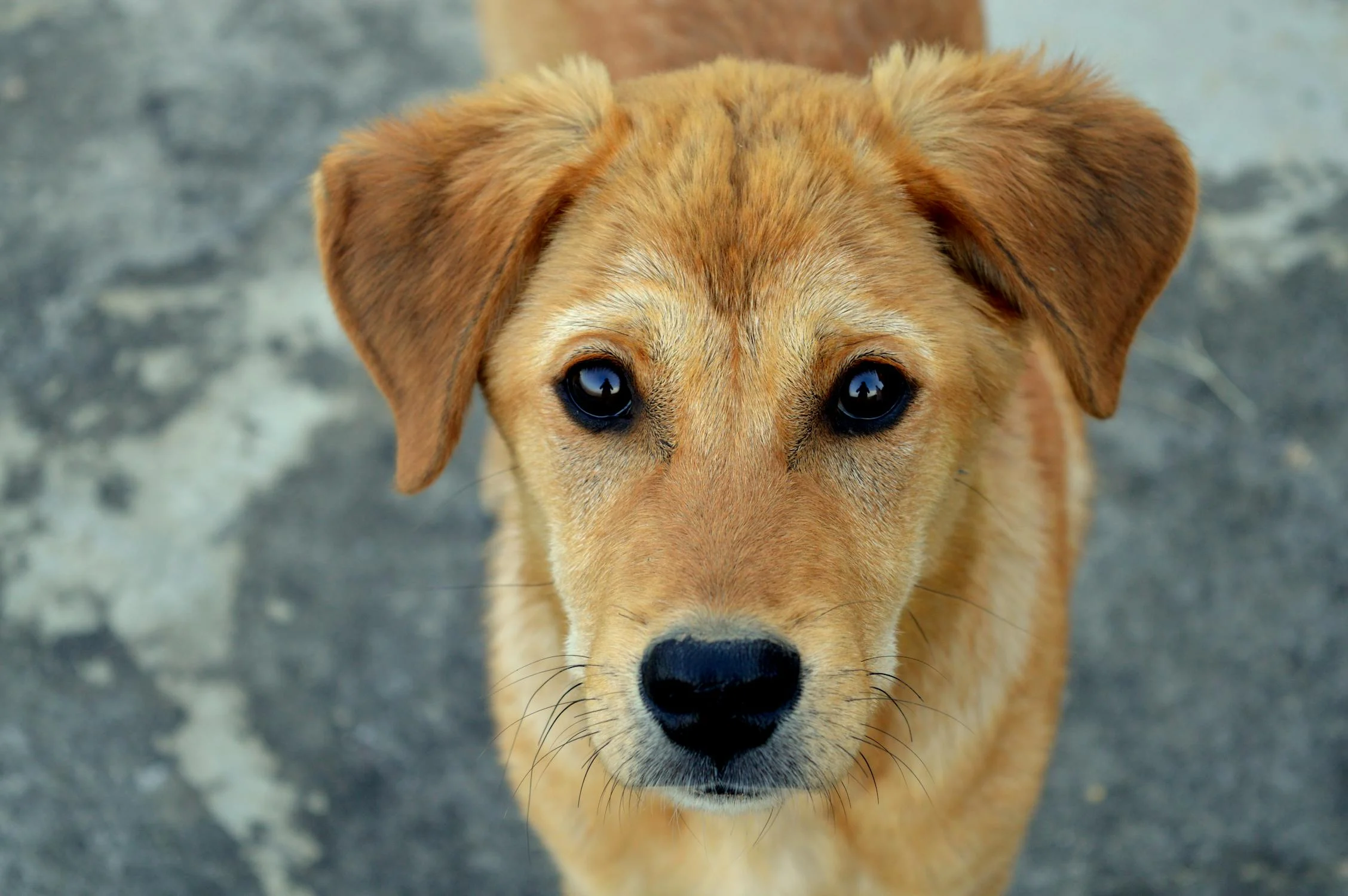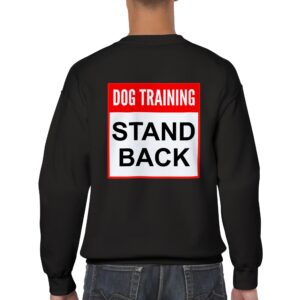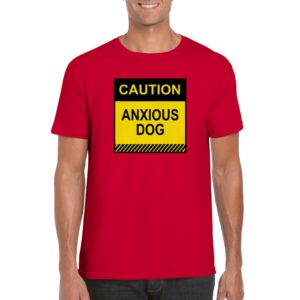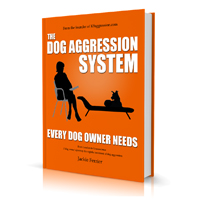Your cart is currently empty!
KEEP A DOG FROM BITING

Sudden dog aggression is not as common as it seems. Dogs often show subtle signs of fear and anxiety before they bite or become aggressive. Dogs who display the warning signs will not necessarily become aggressive, but if you have a dog that bites or an aggressive dog, it’s best to watch for these signs that your dog is becoming anxious and then move away if you see them.
If a dog has history of aggression, the sequence may be shortened or missing altogether.
There are a few main ways to prevent biting
- Observe and respond to the behavior that tells us the dog is uncomfortable and remove the dog immediately from the situation
- Use a tool of some sort to physically prevent bites such as a muzzle
- Use a tool that allows you to easily direct the dog and the dog’s mouth away such as a head halter
- Keep the dog away from the things that triggers anxiety, fear or aggression
- Behavior Modification to make a dog a safer pet to be around – however, any dog can bite under certain circumstances so is not reliable as a method to prevent biting
Dog Behavior To Be Alerted By
Before a dog bites or behaves aggressively there are often warning sides. Responding to these warning sides by establishing distance between your dog and the thing triggering the dog’s fear, frustartion or anxiety can keep a dog from biting.
- Licking lips when there is no food around
- Yawning when the dog isn’t tired. These yawns often tend to be snappier than true yawns.
- Panting when the dog is not hot
- Ears to the side, brow furrowed
- Freezing and stiffening up. A stiff, frozen dog is just waiting to lunge and attack
- Moving slowly. Contrary to what some people think, dogs do not always freeze before they bite. A dog in slow motion is also one to watch out for
- Staring. This often goes along with freezing or stiffening up, and sometimes with moving slowly as well
- Pacing
- Avoiding food or refusing treats. Some dogs are just overfed, but if your dog is refusing treats, he might be stressed
- Cowering or submissive like behavior. Sometimes this can appear with play-like behavior but in fact the dog is anxious and may be testing for a reaction
How to respond to an uncomfortable, anxious or aggressive dog
How you respond may depend on how anxious a dog is and how ready they are too bite. If you are the object they are directing their aggression at, ironically you have more control than if your dog is directly their aggression at someone else. The reason for that is they are directly all their attention to the threat. It can be next to impossible to get their attention once they are in this phase.
Using Food
Keep in mind that any dog who is fearful or in attack mode may look at any sudden movement on your part as a threat, including tossing food.
Food might help distract a dog depending on the phase he or she is in. Generally fearful or anxious dogs are not interested in food, but some dogs have a strong food habit. If your dog is the type of dog to lunge for food dropped from a table, this may work for you. Toss food on the ground where they can see it but away from the focus on their attention.
Fearful Dogs
Some dogs will visibly show they’re afraid. Don’t make the mistake thinking that a fearful dog should be reassured by you even if you are the owner. For example, a dog at the vet, or a dog perceiving a threat by another dog does have the potential to turn on you. But in the majority of cases, putting distance between them and whatever they are threatened by, whether you or someone else is enough.
Barking Dogs
If a dog is barking, that usually indicates there is a fair amount of alarm and any aggression is mixed with fear.
A dog who is anxious can usually be backed away from. Turning your head to the side is usually a good signal that you don’t mean any harm to the dog.
If there is other noise and commotion like people shouting or other dogs barking, this threshold to aggression will be reached much sooner.
Growling Dogs
Growling and baring teeth are communication signals telling you to back off. In most cases because they are communicating to you to back off, they are also telling you it’s safe to step back. However this is not a guarantee. It all depends on the stress level of dog and to what degree they believe you are a threat. Sometimes an aggressive sequences becomes truncated (shortened) from habit.
An aggressive dog does not always give warning signs like growling or snarling, especially if they have been aggressive before or they believe the threat level is very high. In some cases, the communication signals are shorts and missed by the person.
A dog that has become stiff and still
If a dog is ready to bite but hasn’t lunged yet, they will be absolutely stiff and still. If they move at all, it could be very slow. They may or may not be looking at you. Sometimes they may not be looking directly at you but will be using their peripheral vision which is much wider than ours to watch for movement. It is best not to move, but clearly look away from the dog first with our eyes, then turning your head to the side if you can. This indicates you are not a threat to a dog but if you move to quickly, he or she may lunge.
Tools to prevent an aggressive dog from biting
- Gentle leaders head halters. These are fantastic tools! Dogs can still bite while wearing a head halter, however properly used its possible to pull gently up, closing the mouth. Fitted correctly and used properly, it is also more possible to control a powerful or aggressive dog that may want to lunge. In addition there is less change of damaging the dogs trachea if he does pull. Dogs should be desensitized and conditioned to wearing them. Dogs often paw at them to get them off, or roll on the ground, but studies have indicated they do not become stressed out by them.
- You can find head halters and Gentle Leaders on Amazon
- There are other alternatives to the Gentle Leader such the Halti head halter or Sporn head halter (on Amazon) as well. They all fit slightly different.
- Basket muzzles. Basket muzzles are considered to be the most humane form of muzzle. Dogs should be desensitized and conditioned to wearing them.
- You can find basket muzzles on Amazon here
- Crates. A dog in a crate or in a room on its own can’t be out around your family or house guests biting them. But be careful your dog isn’t in there too long, or has the opportunity to be teased or provoked while inside them. In addition some dogs have phobias about crates and do much better behind a metal gate (Amazon promotion) that you can easily install in your home.
- Gates. Many dogs can leap over gates or push the pressure mounted gates down so you need to take some care in the kind you install
- Remove the dog from the area. It may seem an obvious one, but people don’t always think to put their dog into a room away from guests. Putting an anxious or aggressive dog in a room with a food toy or raw bone may be less anxiety provoking that being in the same room with people or other animals he or she is uncomfortable with
How to greet a dog
Many bites happen during greetings.
- Ask the owner if you can say hello – owners that hesitate may know their dog can be unpredictable
- Approach dogs casually and present your side, opposed to head on
- Use a “soft gaze” which includes glancing at the dog’s nose, ears, etc. Don’t stare, use your peripheral vision, or take short glances
- Crouch, don’t tower over a dog (unless the dog is a jumper)
- Let the dog approach you, don’t lean forward with your hand out
- Gentle pets on the side of the neck – Don’t squeeze, hug and pat hard or slap
- After a moment or two of petting, stop and observe the dog. Dogs who like to be petted communicate they want more. If the dog turns his or her head away from you, steps away from you, discontinue petting as the dog isn’t enjoying it at the moment
Human Behaviors to Avoid
There are common things we do that can feel threatening to some dogs. Many involve some kind of physical interaction.
Here is a list of behaviors to avoid.
- Don’t touch a dogs head or back when petting them, instead pet them on their shoulders or side of their neck.
- Don’t reach down to small dogs to pet them if they aren’t asking to be petted
- Don’t step over a dog lying down.
- Don’t physically try to move a dog from a resting place, even if they don’t belong there
- If a dog goes to bite your hand after putting a toy near you, ignore him or her the next time they presents a toy to you. They may not be asking to play so much as testing to see where your threat threshold lies
- Don’t stare at the dog. Instead glance and look around their face (eyes, ears, moth, etc.)
- Don’t bark or growl at a dog
- Don’t make sudden moves towards the dog
- Don’t wake a dog from sleeping by touching them. If you need to wake them up, use some kind of noise, or in the case of hard-of-hearing dogs some kind of vibration through the floor (like a heavy step)
Essential Behaviors to Teach Dogs
Recall
If you need to move a dog out of the way or off furniture, teach them to come when called (always use positive reinforcement training, like toys or food as rewards).
Teach this using a very high value reward, and practice this regularly.
It’s best to use a cue word for this, rather than their name if you have a history of scolding them by using their name, or yelling their name when they don’t come. If they don’t come when you use the cue word don’t keep using it.
Target
Provided its safe to do so, teach your dog to touch your hand with their nose. It is fairly easy to teach and can be very useful to moving dogs around in small spaces, like hallways and kitchens.
Sit-stay
Sitting is a natural behavior dogs do when they choose to defer to others. Their bottoms are fully on the ground rather than a squat. Teach this in an area where they are most comfortable and least distracted. As they learn this, Increasingly wait for relaxed behavior before rewarding them. As they become successful change the variables. Always start from easiest to hardest once they are predictably successful with the last. If they cant be successful return to the last step, and change the variables a little less obviously.
Variables to change up:
- Your position (standing, sitting, walking)
- Your voice (quite, loud, whisper)
- Your distance from them, and where you are in relation to their body position
- Different rooms, eventually outside
- Different distractions
- Teaching them to sit and wait eventually helps calm them down.
Look
Teach your dog to look at you when you ask. This helps them check in with you. Sometimes dogs are willing to sit and wait when you ask, but they don’t want to take their eyes on whatever it is that they’re concerned about. ASking them to look can help interrupt this sequence.
Learn More
If you are interested in learning more about treating dog aggression, check out our e-book, The Dog Aggression System Every Dog Owner Needs (print version soon to be on it’s way). It not only describes behavior modification, but talks about other ways to help improve dog aggression.
ADVERTISEMENT

Keep people away with our Stand back shirts

Anxious Dog Shirts only available in our shop

